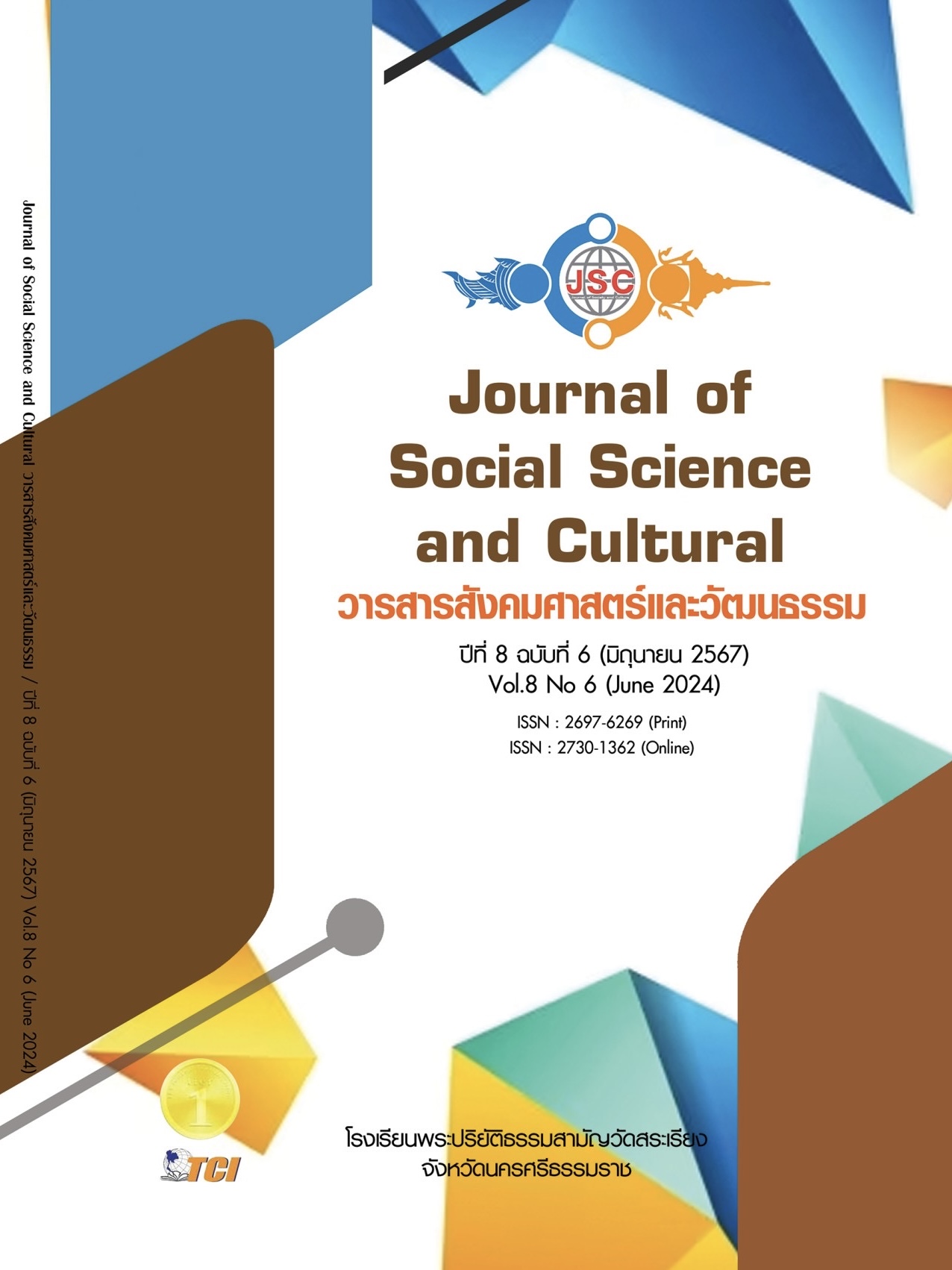CREDIT RISK AND FINANCIAL PERFORMANCE OF THAI COMMERCIAL BANKS DURING 2019 - 2023
Main Article Content
Abstract
This research aimed to 1) study the credit risk factors of commercial banks in Thailand and 2) examine the impact of credit risk on the financial performance of these banks. The study utilized a sample of five commercial banks in Thailand, considering their total assets, and conducted a regression analysis to investigate the relationship between credit risk indicators and financial performance indicators from 2019 to 2023. The credit risk indicators included risk values, net profit margin, non-operating assets ratio, loan reserve rate, and borrowing ratio. The research findings indicated that various factors, such as changes in interest rates, competitive pressure, rapid increases in interest rates, and economic uncertainty, significantly impacted the credit risk of commercial banks in Thailand. These factors led to an increased risk for the banks. Additionally, the ability of these banks to generate profits, maintain asset quality, allocate credit, and manage debt levels were identified as crucial considerations. The study concluded that effective management of these factors could reduce credit risk and enhance the financial performance of commercial banks in Thailand. Awareness of these impacts is essential for planning future financial strategies and decisions. The regression analysis underscored the significant effect of credit risk variables on the financial performance of banks and highlighted the necessity for effective risk management strategies to improve profitability and strategic decision-making in commercial banks in Thailand.
Article Details
References
Anto, M. & Fakhrunnas, F. (2022). Islamic Banks Credit Risk Performance for Home Financing. Economic Journal of Emerging Markets, 14(2022), 17-32.
Avgouleas, E. (2020). Bank Leverage Ratios and Financial Stability: A Micro-and Macroprudential Perspective. SSRN Electronic Journal, 10(2020), 211-222.
Barboza, K., et al. (2016). Credit risk: From a systematic literature review to future directions. Corporate Ownership and Control, 13(2016), 64-75.
Harimurti, C. (2022). Analysis of Internal Factors Affecting the Net Interest Margin of Conventional National Private Banks. Majalah Ilmiah Bijak, 19(2022), 88-102.
Hodeghatta, U. & Nayak, U. (2023). Multiple Linear Regression. Practical Business Analytics, 10(2023), 1-18.
Ibrahim, M. (2023). Role of Technological Innovations in the Development of an Indian Banking Sector. Social Capital, 10(2023), 156-167.
Khairi, B., et al. (2021). A Literature Review of Non-Performing Loan. Journal of Business and Management Review, 2(2021), 268-293.
Larcher, G. (2022). Risk Measurement and Credit Risk Management. ResearchGate, 10(2022), 23-35.
Mahjus, K. (2023). Banking Credit Risk and Efficiency: Some Countries in ASEAN. Economics Development Analysis Journal, 12(2023), 36-49.
Martens, W. & Bui, C. (2022). Loan Loss Provisioning and Efficiency: A Study of Frontier Market Banks. VNU Journal of Economics and Business, 2(2022), 150-163.
Ozili, P. (2023). Bank loan loss provisioning for sustainable development: the case for a sustainable or green loan loss provisioning system. Journal of Sustainable Finance & Investment, 10(2023), 45-57.
Wahyuni, J., et al. (2021). Impact of the COVID-19 pandemic and New Normal implementation on credit risk and profitability of Indonesian banking institutions. Banks and Bank Systems, 16(2021), 201-224.


